World Seagrass Day and Seagrass Awareness Month at Project Seagrass
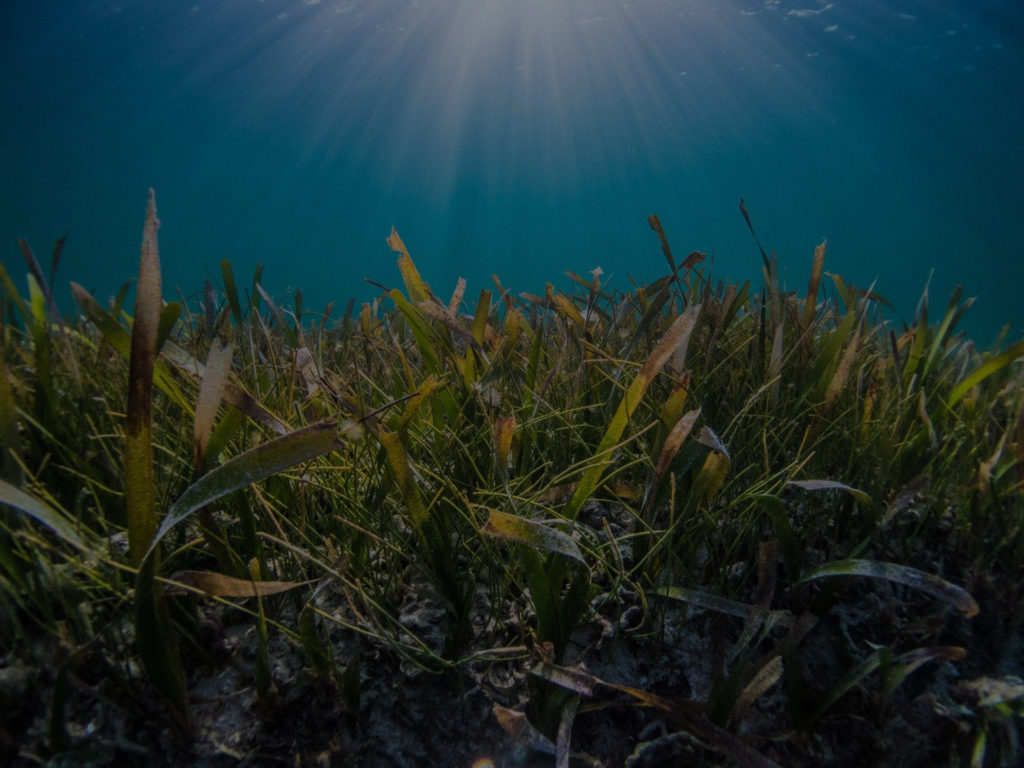
Storm Garry March 1st marked an important date in seagrass history as globally we celebrated the very first World Seagrass Day, formally recognised by the United Nations! This day will continue to annually raise awareness of the importance of healthy seagrass meadows. Seagrass is the only marine flowering plant in our ocean, creating vital marine habitats (known as seagrass meadows) within shallow, sheltered coastal areas. Seagrass meadows have many ecosystem services: they serve as a habitat, nursery ground and feeding area for thousands of marine animals. They also produce oxygen, improve water quality, buffer ocean acidification, reduce coastal erosion and lock carbon within their sediments. However, seagrasses are threatened globally and this is often due to anthropogenic threats such as industrial and agricultural pollution and coastal development. In order to protect these meadows, we must spread awareness of the ecosystem services seagrass holds. By conserving and restoring seagrass we can contribute to achieving 16 of the 17 Sustainable Development Goals, set by the United Nations. Here at Project Seagrass, we kicked off World Seagrass Day with a live international panel, where we took ‘a deep dive into the global challenges of seagrass conservation’. Within this webinar panelists discussed the challenges seagrass meadows are facing and how we can overcome them which built on our 2018 research article with the same name. Our international panel was followed by a LinkedIn Live alongside our partners at CGI UK, where we celebrated the release of a new open-source algorithm which will aid the mitigation of climate change and map biodiversity, by locating and quantifying seagrass meadows using satellite imagery. On the other side of the digital sphere, our Chief Conservation Officer (CCO) Benjamin Jones made an online appearance as President of the World Seagrass Association, speaking at a national event in Sri Lanka, hosted by the Ministry of Environment. This was hugely significant for Sri Lanka, since they set the ball rolling by tabling the resolution that led to the adoption of an official UN World Seagrass Day. Project Seagrass also participated in activities alongside our “Seagrass Ecosystem Services Project” partners Blue Ventures. The team at Blue Ventures and Husikonservasaun, celebrated with a beach clean, community events, seagrass talks and locally managed marine area (LMMA) talks in Hera, Timor Leste. Credit: Blue Ventures and Husikonservasaun The month of March is also considered Seagrass Awareness Month, the roots for which lie in Florida, USA, where organisations like the Fish and Wildlife Foundation of Florida use the month to celebrate seagrass and raise awareness about the significance of seagrass for the Florida’s waterways and wildlife. Throughout Seagrass Awareness Month, our Seagrass Ecosystem Service Project partners were busy conducting further Baited Remote Underwater Video (BRUV) and seagrass assessments. Blue Ventures, Timor Leste, Save Andaman Network, Thailand and Yapeka, Indonesia are using these assessments to identify key areas of seagrass for fisheries and monitor seagrass health. In addition, a new phase of our Seagrass Ocean Rescue project began in Wales, England and Scotland, UK, with over 300,000 seeds that we harvested last summer, leaving our seed storage unit to be planted. In Wales, this project will continue until the end of 2026, with an aim to have planted seagrass across 10 hectares of the seabed. This project builds on the support of the local community in Pen Llyn, Wales. Furthermore, we have also teamed up with WWF Cymru with a petition to call upon the Welsh Government and express the urgency to support the restoration seagrass meadows. Credit: Theo Vickers The first UN designated World Seagrass Day gave seagrass the recognition it deserves, being celebrated across the world. In recent years there have been many advancements in seagrass knowledge, however there is still a long way to go for seagrass. By continuing to raise awareness and better understanding these incredible marine plants, we can protect these vital ecosystems. Find out more about what we do our website: www.projectseagrass.org For more information on the UN’s Sustainable Development Goals: https://sdgs.un.org/goals
Understanding Wales past oceans to inspire their biodiverse future
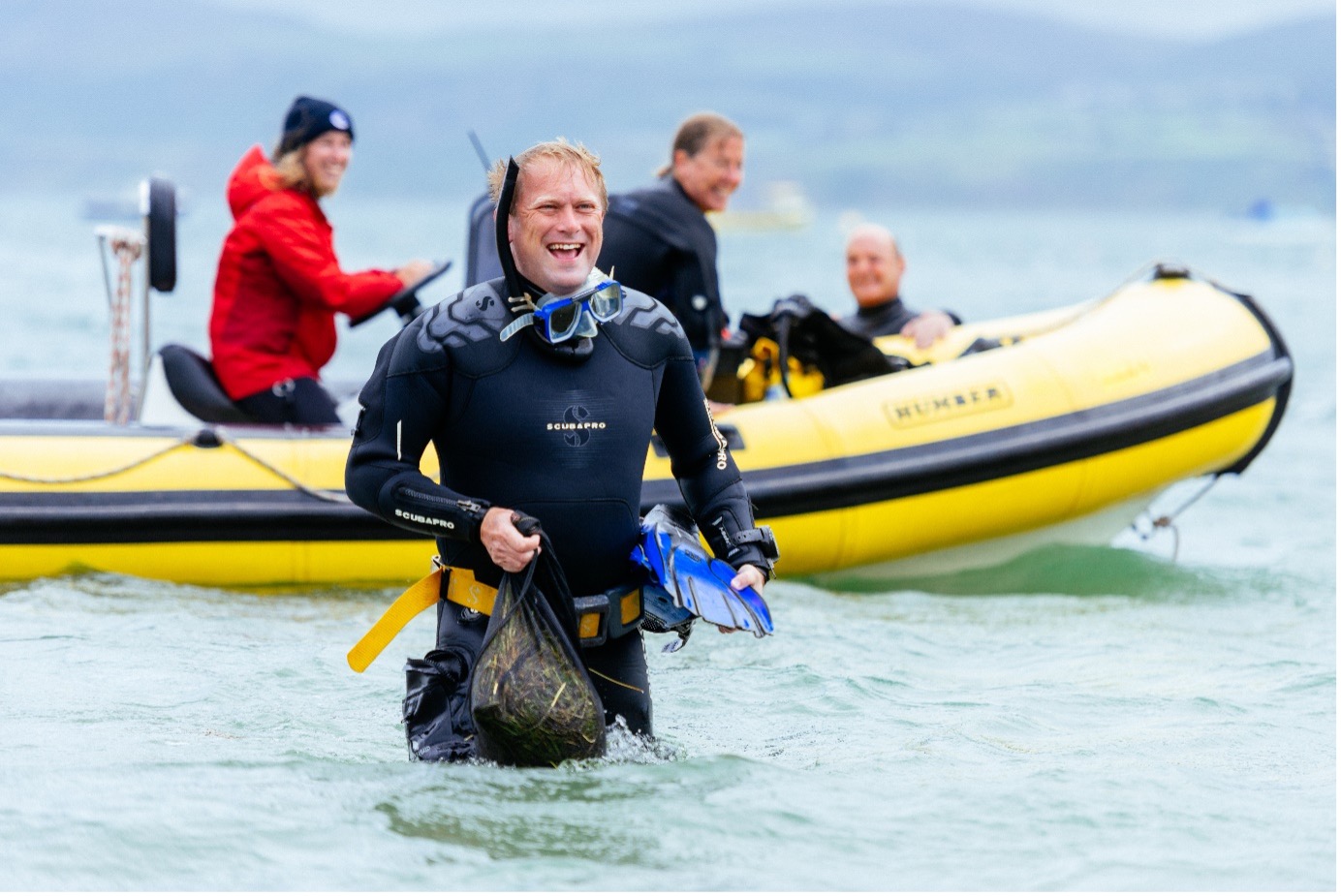
Dr Richard Unsworth, Project Seagrass and Swansea University The seas around Wales have so much potential. They offer rich biodiversity hidden within productive lush habitats such as kelp forests, salt marshes and seagrass meadows. Life in these waters can be so ingenious that it bioengineers its own environment. Out of seemingly nothing, reefs and seagrass appear that can protect our coast and filter our water. Deepwater horse mussels that bring barren depths to life. All these habitats are teaming with life. We have Mearl beds too that are like the coral reefs of the Atlantic. We have whales, we have dolphins and we can even see turtles feeding on summertime jellyfish blooms. We also have sharks and seabirds a plenty. We potentially have it all. The Celtic seas around Wales used to support the food supply and livelihoods of the people of our nation, but this is no longer the case. Scratching the surface of history and it doesn’t take much to see this glorious past that we’ve allowed to be washed away. Our industrial past of mining and heavy industry as well as our overfishing and gross mismanagement of land have left a terrible decimation. Visiting Penllyn earlier this summer I was reminded of the Three herrings, the symbol of Nefyn – Nefyn herrings used to be sold as a high value product to the wealthy in Manchester and there used to be an abundant Fishery for the now mostly extinct crayfish. But these fisheries have long since disappeared. In South Wales, 1000’s of boats going out daily into Swansea bay collected Oysters a plenty, these provided jobs, food and a way of life. And now all that is left of this abundance of sea life in Oystermouth and the Mumbles are stories and tales. Wales is left with folklore rather than food. It’s also fascinating to consider what habitats and species would have populated our South Wales coastline before we build ports, reclaimed vast swaths of the intertidal and flooded coastal embayments with barrages. These areas were prime for biodiverse habitats. Sat in a Laugharne Pub soaking up the atmosphere of Dylan Thomas you see pictures from the 1930’s of a 3m long sea monster proudly held by a group of men. This picture isn’t from Cambodia on one of Jeremy Wades ‘ Sea Monster’ series, but it’s a sturgeon caught in the Taf Estuary in what’s now the Carmarthen bay and rivers special area of conservation. Our coastal environments were once full of such diverse and abundant life that is now largely locally extinct. A short trip onto the delightful town Tenby, or as it was locally known ‘Dinbych Y Pysgod’ or ‘Fort of the fishes’ you readily see signs everywhere of historically productive fisheries that are now largely lifeless. Fishermen on the beach get excited when they catch a small plaice, and my son out fishing with his grandparents fails to even catch the odd Mackeral. Hardly the abundance that led to the development of a thriving town and furnished the wallets of the monks of Caldey. Just how did we as a nation let this decline happen. How can we possibly pass this travesty of an environment to the next generation without doing something drastic? Moving west from Tenby we find the remnants of a once vast and abundant fishing community on the shores of the Cleddau. Yes, the waters of Milford Haven were over fished, but we also allowed heavy industry, poor land management and inappropriate farming activity to destroy the very habitats that had sat there for 10’s of thousands of years and supported the fisheries. We’ve allowed this to continue with the ongoing pollution of the sea from the activities of the land. Milford Haven waterway was once home to Wales last major Mearl bed, but that gave way to the pursuit of ever bigger infrastructure for oil and gas. As we heat the waters of the Cleddau with power station outfalls and subject the area to ever-increasing nutrient loads, the delicate seagrass continues to struggle as it increasingly respires without enough energy to keep going. As catchments and coasts degrade the place becomes ever more awash with mobile sand and mud particles further damaging the environment. Divers in the 1970’s tell of clear waters at the Neyland bridge in Milford Haven at sites that would now be too plagued with sediment and are too murky to even consider for a dive. Wales, what have we done? How did this happen? Now is not the time for a blame game, we need action instead. The Welsh Government has declared a biodiversity emergency as well a climate emergency. Time is of the essence and there is much to do. We need to take significant action to enable our marine environment to once again support our communities, our livelihoods, our well-being and most of all our planetary support. Last week we saw the launch of the Welsh Government Biodiversity Deep Dive recommendations of how the nation will start to repair its depleted habitats and associated biodiversity. A key part of these recommendations are a series of urgent actions required for the marine environment. I was part of the working group of biodiversity experts tasked with creating these recommendations. It’s fantastic to see the fresh impetus for the government to take action on establishing marine protected areas and fulfil their election promise to invest in the restoration of seagrass and salt marsh. Politics aside, I was proud to be working with a minister and government who want to do the right thing, who want to actively reverse biodiversity loss and who understand the precarious environmental tight rope that we’re currently walking and the history of political promises but limited change. What we now need is action, we need the Welsh Government on the back of a terrible political climate from central government to push their prosed recommendations and agenda forward. We need the Marine Protected Area plans to move out from their covers and
Running Out of Time
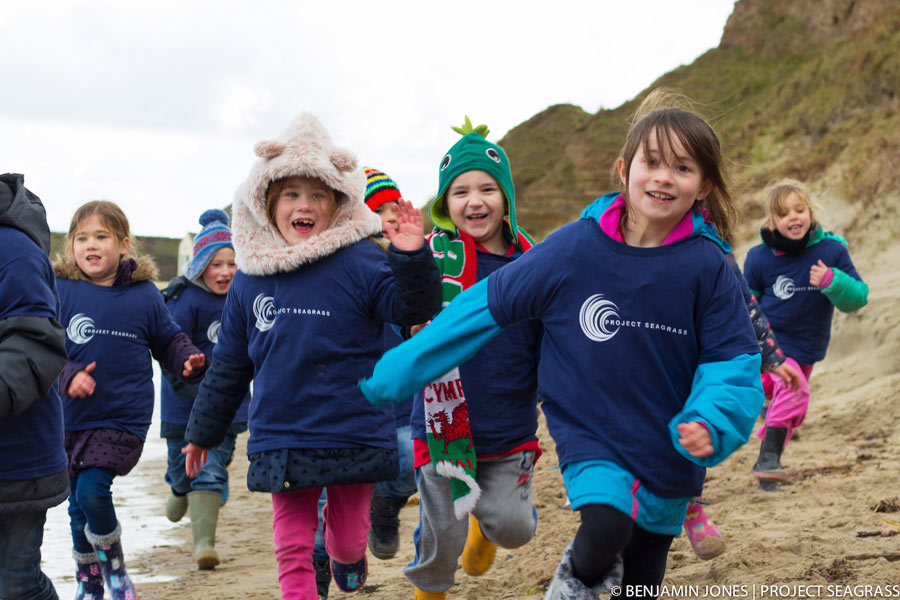
[vc_row type=”in_container” full_screen_row_position=”middle” scene_position=”center” text_color=”dark” text_align=”left” overlay_strength=”0.3″ shape_divider_position=”bottom” bg_image_animation=”none”][vc_column column_padding=”no-extra-padding” column_padding_position=”all” background_color_opacity=”1″ background_hover_color_opacity=”1″ column_link_target=”_self” column_shadow=”none” column_border_radius=”none” width=”1/1″ tablet_width_inherit=”default” tablet_text_alignment=”default” phone_text_alignment=”default” column_border_width=”none” column_border_style=”solid” bg_image_animation=”none”][vc_column_text]This Thursday 6th October, Project Seagrass will be taking part in the Running Out of Time climate relay. The relay runs from COP26 to COP27 – from Glasgow, Scotland all the way to Sharm el-Sheikh, Egypt. It takes place over 38 days across 18 countries to carry a relay baton containing a message from young people to the decision makers at COP27. You can read the message here. Project Seagrass are proud to be taking part in the relay across South Wales from our research facilities in Swansea to our HQ in Bridgend. We will be carrying our own letter from the pupils of the Eco Club at Coychurch Primary School. Read their letter below:[/vc_column_text][/vc_column][/vc_row][vc_row type=”in_container” full_screen_row_position=”middle” equal_height=”yes” scene_position=”center” text_color=”dark” text_align=”left” overlay_strength=”0.3″ shape_divider_position=”bottom” bg_image_animation=”none” shape_type=””][vc_column column_padding=”no-extra-padding” column_padding_position=”all” background_color_opacity=”1″ background_hover_color_opacity=”1″ column_link_target=”_self” column_shadow=”none” column_border_radius=”none” width=”1/3″ tablet_width_inherit=”default” tablet_text_alignment=”default” phone_text_alignment=”default” column_border_width=”none” column_border_style=”solid” bg_image_animation=”none”][image_with_animation image_url=”10572″ alignment=”” animation=”Fade In” border_radius=”none” box_shadow=”none” max_width=”75%”][/vc_column][vc_column column_padding=”no-extra-padding” column_padding_position=”all” background_color_opacity=”1″ background_hover_color_opacity=”1″ column_link_target=”_self” column_shadow=”none” column_border_radius=”none” width=”1/3″ tablet_width_inherit=”default” tablet_text_alignment=”default” phone_text_alignment=”default” column_border_width=”none” column_border_style=”solid” bg_image_animation=”none”][/vc_column][vc_column column_padding=”no-extra-padding” column_padding_position=”all” background_color_opacity=”1″ background_hover_color_opacity=”1″ column_link_target=”_self” column_shadow=”none” column_border_radius=”none” width=”1/3″ tablet_width_inherit=”default” tablet_text_alignment=”default” phone_text_alignment=”default” column_border_width=”none” column_border_style=”solid” bg_image_animation=”none”][image_with_animation image_url=”10571″ alignment=”right” animation=”Fade In” border_radius=”none” box_shadow=”none” max_width=”75%”][/vc_column][/vc_row][vc_row type=”in_container” full_screen_row_position=”middle” scene_position=”center” text_color=”dark” text_align=”left” overlay_strength=”0.3″ shape_divider_position=”bottom” bg_image_animation=”none”][vc_column column_padding=”no-extra-padding” column_padding_position=”all” background_color_opacity=”1″ background_hover_color_opacity=”1″ column_link_target=”_self” column_shadow=”none” column_border_radius=”none” width=”1/1″ tablet_width_inherit=”default” tablet_text_alignment=”default” phone_text_alignment=”default” column_border_width=”none” column_border_style=”solid” bg_image_animation=”none”][vc_column_text] Letter to Tomorrow To a school child in the future, We are writing this on behalf of Coychurch Primary School children. This is a letter about our hopes and dreams for the future. We hope that in the future, native trees in our rainforests have been replanted and that only sustainable palm oil is used in products worldwide. We want to see many of our endangered animals, bees and insects thriving to support biodiversity. When you go to the beach with your family, we hope you can play in the sand and the sea without pollution, and it is free from single-use plastics. Beach litter picks are a thing of the past! If you snorkel, you will see seagrass fields that support marine life and trap carbon to help stop climate change. We want all schools to run on renewable energy with solar panels on the roof and wind turbines in the community. At school and at home, meat-free days will happen every week, and you will eat local and Fairtrade foods. Your food waste will be composted and used to grow fruit, flowers and vegetables in your school garden. When you read this, you should not be worried about your future and climate change right now because countries, governments, communities and families have listened to our pupil’s voices, taken climate change seriously, and we have made a difference. Love from, Coychurch Primary School Wales (Written by pupils in the Eco Club) [/vc_column_text][/vc_column][/vc_row][vc_row type=”in_container” full_screen_row_position=”middle” scene_position=”center” text_color=”dark” text_align=”left” overlay_strength=”0.3″ shape_divider_position=”bottom” bg_image_animation=”none”][vc_column column_padding=”no-extra-padding” column_padding_position=”all” background_color_opacity=”1″ background_hover_color_opacity=”1″ column_link_target=”_self” column_shadow=”none” column_border_radius=”none” width=”1/1″ tablet_width_inherit=”default” tablet_text_alignment=”default” phone_text_alignment=”default” column_border_width=”none” column_border_style=”solid” bg_image_animation=”none”][vc_column_text]You can get involved with the climate relay here.[/vc_column_text][/vc_column][/vc_row]
Want to host the 15th International Seagrass Biology Workshop?
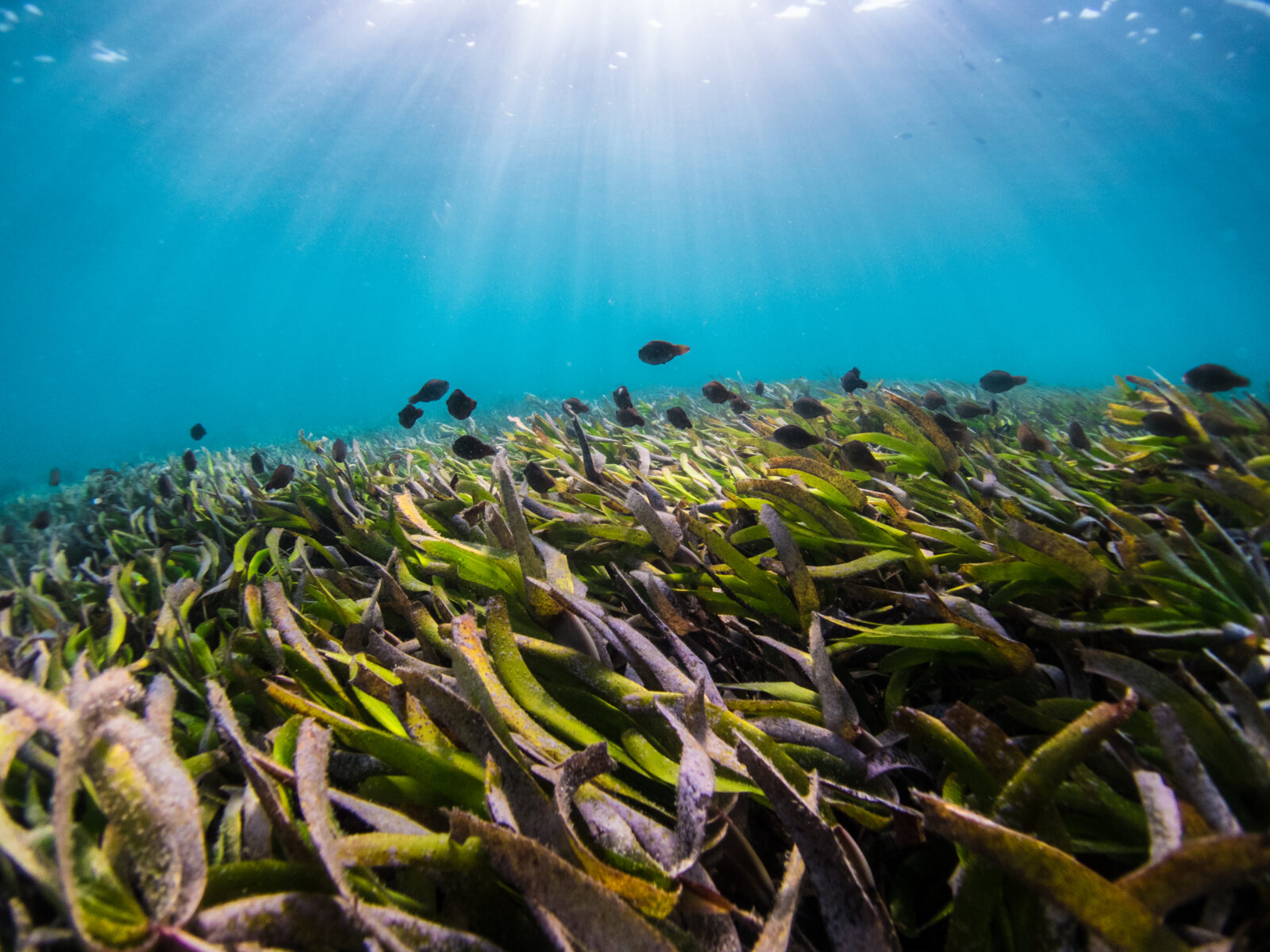
The World Seagrass Association Inc. invites expressions of interest from members and interested organisations/institutions who would like to host the 15th International Seagrass Biology Workshop (ISBW) in 2024.The International Seagrass Biology Workshop series is a meeting of research scientists, students and coastal environment managers focusing on global seagrass issues, improving seagrass knowledge, developing networks and advocating for seagrass protection/conservation.ISBWs are often 2-3 day workshops with an additional day for a field trip. Participants are generally limited to 100 however this is highly dependent on the venue. The timing for ISBWs has mostly been late September, although the timing is dependent on the most suitable for the hosting country (e.g. tides, holidays, etc). After the first ISBW in 1993, it was decided that meetings were to be held at two year intervals, swapping between developed and developing nation locations if possible. ISBW14 was originally scheduled to be held in 2020, but has been postponed to 2022 in light of the global COVID-19 pandemic. The 2022 meeting (ISBW14) will be held in Annapolis (Maryland, USA) from 7 – 12 August 2022, in conjunction with the World Seagrass Conference (WSC2022) (https://isbw14.org/). Past ISBW venues included: ISBW1 (1993) Japan – KominatoISBW2 (1996) Australia – Rottnest IslandISBW3 (1998) The Phillippines – Quezon City and BolinaoISBW4 (2000) France – Corsica!SBW5 (2002) Mexico – EnsenadaISBW6 (+Conference) (2004) Australia –Townsville and Magnetic islandISBW7 (2006) Africa – ZanzibarISBW8 (2008) Canada – Bamfield, Vancouver islandISBW9 (+Conference) (2010) Thailand – Phuket and Trang ProvinceISBW10 (2012) Brazil – BuziosISBW11 (2014) China – Sanya, Hainan ProvinceISBW12 (2016) United Kingdom – Nant Gwrtheyrn, WalesISBW13 (+Conference) (2018) Singapore To read about the history of the ISBW series, see Coles, R., Short, F., Fortes, M. and Kuo, J (2014) Twenty years of seagrass networking and advancing seagrass science: The International Seagrass Biology Workshop Series. Pacific Conservation Biology 20(1): 8–16. (http://www.publish.csiro.au/nid/302/paper/PC140008.htm), and Hind-Ozan, E.J., Jones, B.L., 2017. Seagrass science is growing: A report on the 12th International Seagrass Biology Workshop. Marine Pollution Bulletin. http://dx.doi.org/10.1016/j.marpolbul.2017.08.017The International Seagrass Biology Workshop (ISBW) is an official activity of the World Seagrass Association Inc., and WSA Inc. plays a guiding role, and assists the Convener/Organising Committee when requested. Members or organisations/institutions who are interested in submitting an expression of interest to host the 15th International Seagrass Biology Workshop (ISBW15) in 2024 should send a letter by email to Len McKenzie, Secretary, World Seagrass Association Inc., at wsa.secretary@gmail.com no later than May 31, 2022. Please include the name and complete contact information including address, phone and fax numbers, and email address of the member or organisations/institutions expressing interest. Letter should clearly state the country location and supporting organisation. Dot points covering the information required are acceptable. The WSA may require more detailed information in future before a final decision. If you require additional information or any enquiries, please email wsa.secretary@gmail.com
Biodiversity is essential to planetary health
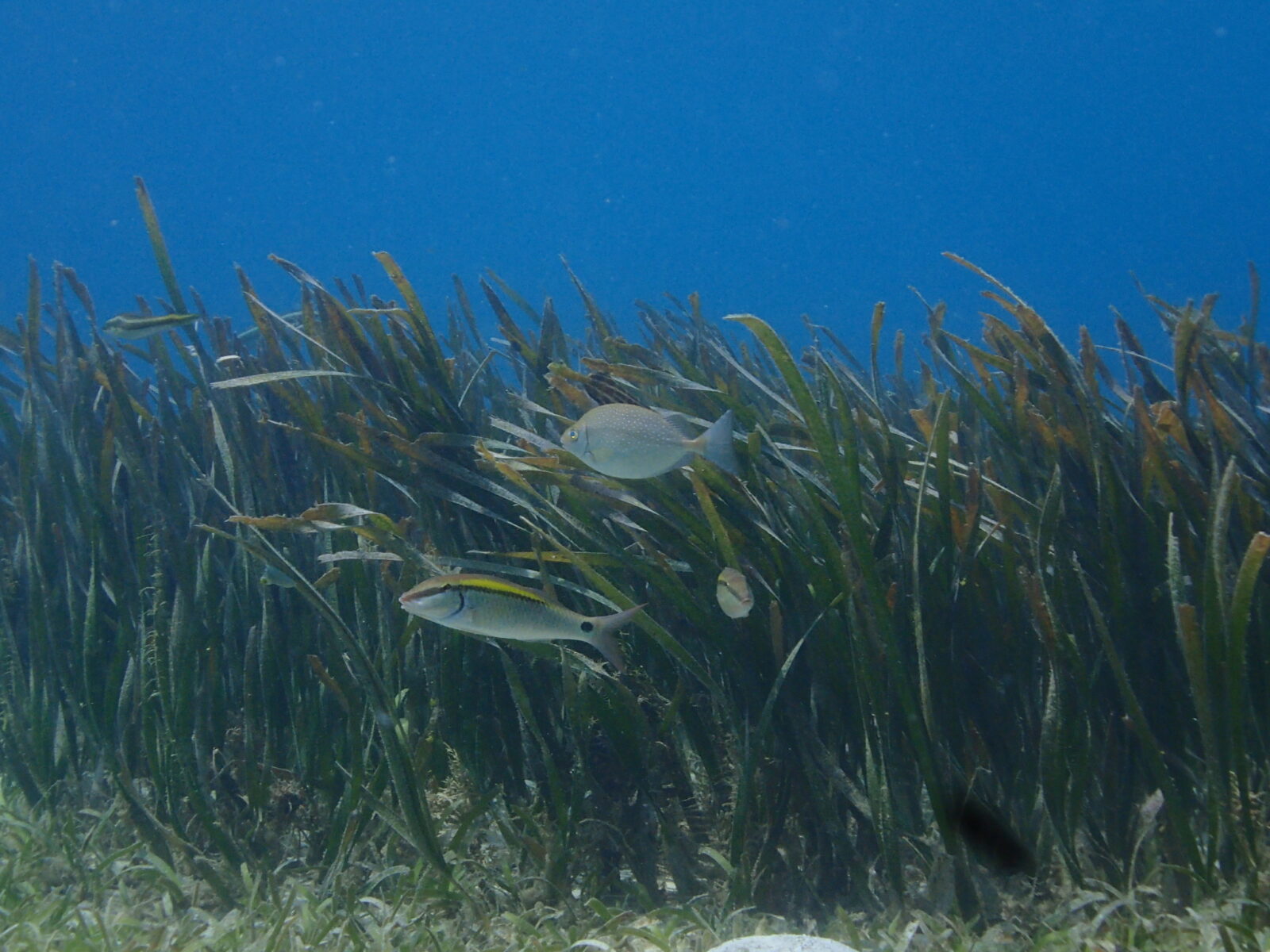
[vc_row type=”in_container” full_screen_row_position=”middle” scene_position=”center” text_color=”dark” text_align=”left” overlay_strength=”0.3″ shape_divider_position=”bottom” bg_image_animation=”none”][vc_column column_padding=”no-extra-padding” column_padding_position=”all” background_color_opacity=”1″ background_hover_color_opacity=”1″ column_link_target=”_self” column_shadow=”none” column_border_radius=”none” width=”1/1″ tablet_width_inherit=”default” tablet_text_alignment=”default” phone_text_alignment=”default” column_border_width=”none” column_border_style=”solid” bg_image_animation=”none”][vc_column_text]A few weeks ago part one of the UN Biodiversity Conference (aka COP15) took place in Kunming, China. Whilst all eyes are on the UN Climate Conference set to take place in Glasgow, UK next week, we must not forget the vital role that biodiversity plays in our planets health. Seagrass habitats are vital for supporting ocean biodiversity. Biodiversity loss threatens both people and planet, placing pressure on our health, economy, and food security. We are currently losing biodiversity at an unprecedented rate. The 2020 Living Planet Report estimated that between 1970 and 2016 the global populations of vertebrates declined by an average of 68%. Land-use change for food production is one of the biggest threats to biodiversity. Humans have changed the face of the earth. We have polluted our oceans and destroyed more than 85% of our wetlands. In a bid to reduce biodiversity loss and stem the destruction of ecosystems by 2020, the Aichi biodiversity targets were outlined and adopted in 2010 at COP10. More than a decade later, not one of those targets were met. We have to realise that humans are not set apart from nature. We are intrinsically linked with nature and the threat to biodiversity is a direct threat to humanity. Our future is dependent on the protection and revival of healthy ecosystems. Biodiversity conservation is a non-negotiable if we are to live on healthy planet with food and economic security. We must stop working against nature. Encouraging biodiversity to flourish is vital for people and planet. COP15 has set the stage for an effective global biodiversity framework to halt the loss of biodiversity and bring life back to our planet. Parties to the Convention on Biological Diversity (CBD) have adopted the Kunming declaration whereby they have committed to negotiate an effective post-2020 global framework that can bend the curve of biodiversity loss. What this looks like will be agreed upon when part 2 of the conference resumes in May 2022. Additionally, parties to the CBD have committed to upping the spend on biodiversity protection and restoration. The Government of China established a 1.5 billion-yuan (c.$233 million) Kunming Biodiversity Fund and the EU have promised to double its biodiversity fund. Parties to the CBD must now commit to an effective framework that puts nature on a path to recovery by 2030. We must all realise the role that healthy, biodiverse ecosystems play in our day-to-day lives and put pressure on our governments to recognise and support nature-based solutions to the climate and biodiversity crises.[/vc_column_text][/vc_column][/vc_row]
A Life On Our Planet
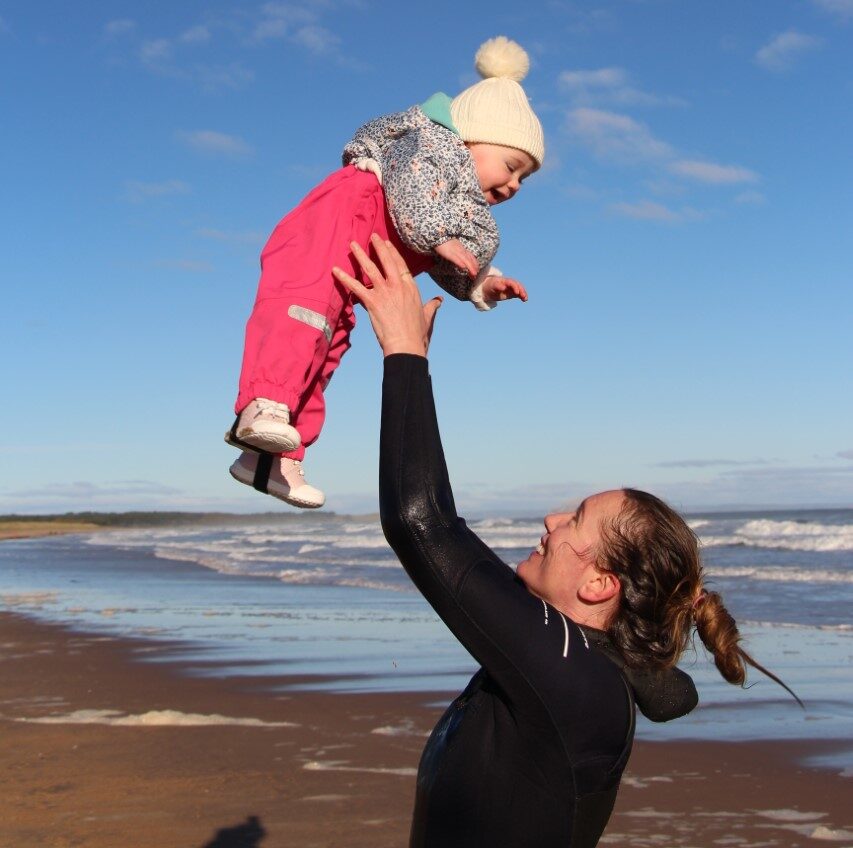
[vc_row type=”in_container” full_screen_row_position=”middle” scene_position=”center” text_color=”dark” text_align=”left” overlay_strength=”0.3″ shape_divider_position=”bottom” bg_image_animation=”none”][vc_column column_padding=”no-extra-padding” column_padding_position=”all” background_color_opacity=”1″ background_hover_color_opacity=”1″ column_link_target=”_self” column_shadow=”none” column_border_radius=”none” width=”1/1″ tablet_width_inherit=”default” tablet_text_alignment=”default” phone_text_alignment=”default” column_border_width=”none” column_border_style=”solid” bg_image_animation=”none”][vc_column_text]“I’ve had an extraordinary life. It’s only now that I appreciate how extraordinary. As a young man, I felt I was out there in the wild, experiencing the untouched natural world – but it was an illusion. The tragedy of our time has been happening all around us, barely noticeable from day to day – the loss of our planet’s wild places, its biodiversity. I have been witness to this decline. A Life on Our Planet is my witness statement, and my vision for the future. It is the story of how we came to make this, our greatest mistake – and how, if we act now, we can yet put it right. We have one final chance to create the perfect home for ourselves and restore the wonderful world we inherited. All we need is the will do so.” -Sir David Attenborough I imagine that by now a fair few of you reading this blog will have seen (or read) A Life On Our Planet; the‘ Witness Statement’ of Sir David Attenborough. If you haven’t, then I would absolutely encourage you to watch it. In fact do that NOW, you can come back to this blog later… If you were feeling anything like me, I was struggling to bring myself to watch the film. Against the background of COVID-19, the perpetual isolation from family and friends, the chronic lack of sleep from my early days of parenting and the harrowing reports I read daily relating to the triple crises of climate, biodiversity and pollution then quite frankly I felt I just didn’t have it in me to sit through some beautifully shot sequences of humanity trashing the planet! But I did sit down to watch it… and I am so very glad I did. Did I sit through a horror show? Well yes… But did it depress me? Well no… If anything the last 30 minutes of the film re-energised me. I needed a ‘pick me up’ and this film was it. If you are reading this blog, then chances are you already know that there has never been a more urgent need to restore damaged ecosystems than now, and I’m not just talking about seagrass ecosystems, but ALL ecosystems. It’s time to revive our planet. #Generation Restoration So here’s my CALL TO ACTION, head over to UNEP’s website NOW and join the #GenerationRestorationmovement today. There has never been a more urgent need to restore damaged ecosystems than now. Ecosystems support all life on Earth. The healthier our ecosystems are, the healthier the planet – and its people. The UN Decade on Ecosystem Restoration aims to prevent, halt and reverse the degradation of ecosystems on every continent and in every ocean. It can help to end poverty, combat climate change and prevent a mass extinction. However, the decade will only succeed if everyone plays a part. So join the movement today! 30km2 by 2030 As a team of interdisciplinary scientists, the work of Project Seagrass crosses the boundaries of both environmental conservation and social action. For seven years we have worked on the ground with coastal communities, both in the UK and internationally. If the last seven years has taught us anything at Project Seagrass, it’s that achieving our mission begins with how we build our team and how we work together. And now we need to work together more than ever: “At Project Seagrass, we are aiming to restore 30km2 of seagrass across the UK by 2030.” Whether you call it ‘rewilding’ or ‘restoration ecology’ the end point is the same. We need to put habitat back and quickly. Or as sir David said: “We have one final chance to create the perfect home for ourselves and restore the wonderful world we inherited. All we need is the will do so.” So to both UNEP and Sir David please know we are ‘all in’ with #GenerationRestoration, and after watching A Life On Our Planet, I am sure you will be too. Stay safe x RJ[/vc_column_text][/vc_column][/vc_row]
The role of seagrass meadows in promoting Ocean Literacy
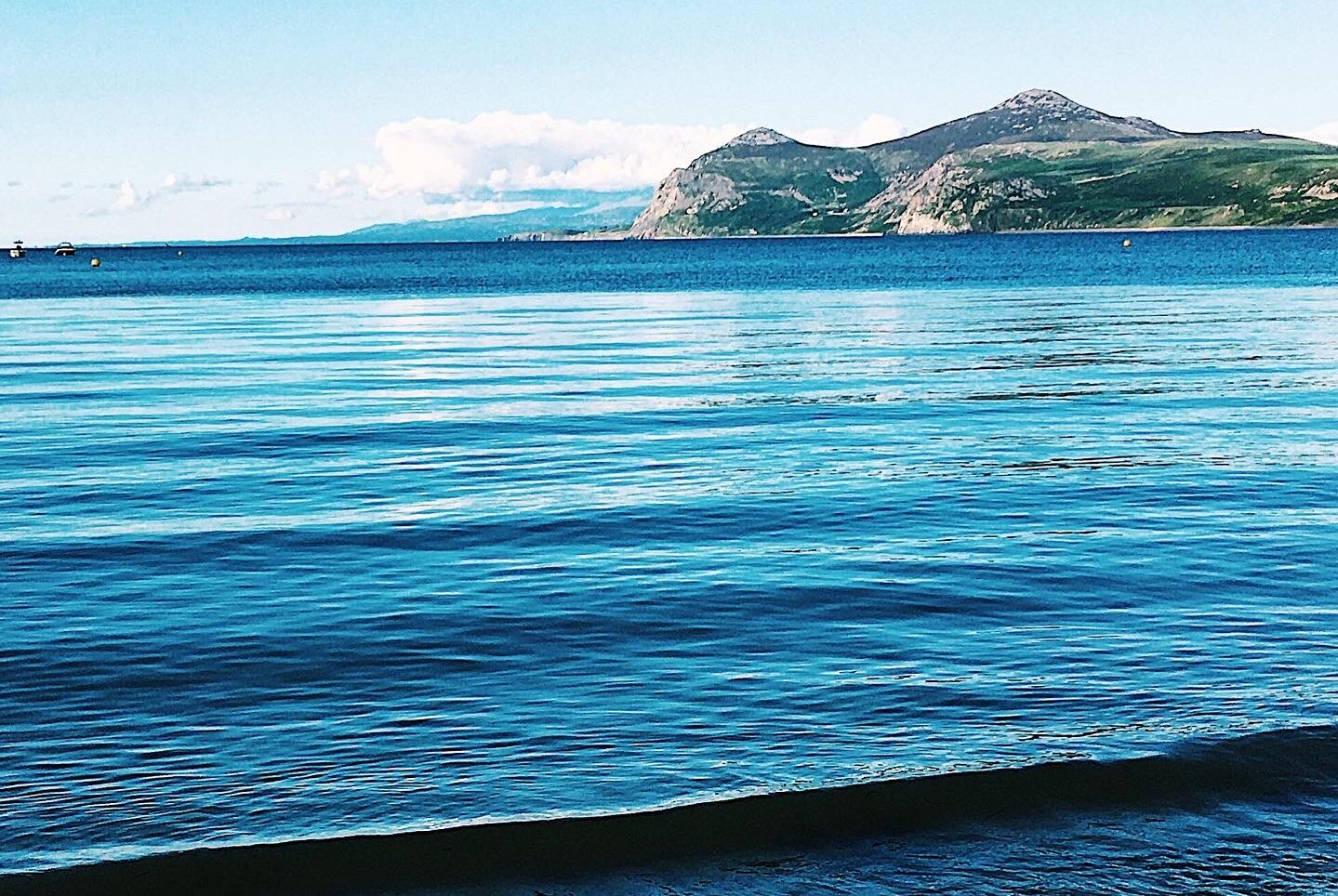
[vc_row type=”in_container” full_screen_row_position=”middle” scene_position=”center” text_color=”dark” text_align=”left” overlay_strength=”0.3″ shape_divider_position=”bottom” bg_image_animation=”none”][vc_column column_padding=”no-extra-padding” column_padding_position=”all” background_color_opacity=”1″ background_hover_color_opacity=”1″ column_link_target=”_self” column_shadow=”none” column_border_radius=”none” width=”1/1″ tablet_width_inherit=”default” tablet_text_alignment=”default” phone_text_alignment=”default” column_border_width=”none” column_border_style=”solid” bg_image_animation=”none”][vc_column_text]Ocean Literacy is defined as ‘an understanding of the ocean’s influence on us and our influence on the ocean.’ There are Seven Principles of Ocean Literacy: The Earth has one big ocean with many features. The ocean and the life in the ocean shape the features of Earth. The ocean is a major influence on weather and climate. The ocean made the Earth habitable. The ocean supports a great diversity of life and ecosystems. The ocean and humans are inextricably interconnected. The ocean is largely unexplored. According to the Marine Biological Association (MBA) these seven Ocean Literacy ‘Principles’ were developed by hundreds of educators and scientists in the USA as a guide to teaching about the Ocean. These principles are now being used as a framework in Europe to develop strategies towards the goal of an Ocean Literate society As stated by the UK’s MBA. “Few of us are aware of how important the sea is to human wellbeing: medically, economically, socially, politically and environmentally. Many of us are unaware of how day-to-day choices and actions can have a cumulative effect on the health of the ocean – a necessary resource that must be protected for life on our blue planet to exist.” The need for improved Ocean Literacy It has long been recognised that improving public awareness about how the ocean can benefit the environment, economy, and society is important (Peterson and Lubchenco 1997, Costanza, 1999). In 2004, a Pew Ocean Commission report identified a need to improve public literacy about oceans. The authors of the report assumed that by enhancing public awareness and knowledge of the oceans, and their influence on our lives, would lead to increased public support for ocean restoration efforts. The Pew Oceans Commission called for‘a new era of ocean literacy that links people to the marine environment’’ [2, p. 91]. The Commission further argues that there is a ‘‘need to provide the public with understandable information about the structure and functioning of coastal and marine ecosystems, how ecosystems affect daily lives, and how we affect ecosystems’’ [2, p. 11]. Since this report was published, low levels of ocean literacy have been, and are continuingly being identified in many countries. These low levels of literacy can be a barrier for citizens to engage in environmentally responsible behaviour or consider ocean-related careers (Guest et al., 2015). Seagrass meadows role in developing Ocean Literacy in the UK Seagrass meadows have a central role to play in developing ocean literacy in the UK. First, they are coastal habitats, readily accessible from the shore by wading or snorkelling and in some locations (i.e. Porthdinllaen in Wales, Lindisfarne National Nature Reserve in England, or Tyninghame in Scotland) they can be easily accessed without specialist equipment simply by walking out at low tide. In addition, there are already well publicised examples from the USA of where restoration of the same seagrass habitat (same species) has lead to rapid recovery of coastal ecosystem services (see Orth et al, 2020). This creates a cause of optimism that similar results could be achieved in the UK since much of the science now exists it just needs to be applied to UK waters. Finally, there are already existing, recognised and celebrated Seagrass Education and Awareness programs running in the UK both through Project Seagrass and the National Marine Aquarium’s ReMEDIES program. This is supported by an active academic literature for further developing this area (Roth and Reynolds, 2020). Conversations are already underway between Project Seagrass and the London Aquarium about a 5-year strategy that would incorporate a national seagrass engagement program and a potential collaboration with BIAZA network of aquariums which could act as community hubs for engaging people with monitoring, and then the potential restoration of their local meadows. References: Pew Oceans Commission. America’s living oceans: charting a course for sea change. A report to the nation. Arlington, VA: Pew Oceans Commission; 2003 144pp. Costanza R. The ecological, economic, and social importance of the oceans. Ecol Econ 1999;31(2):199–213. Peterson CH, Lubchenco J. Marine ecosystem services. In: Daily G, editor. Nature’s services: societal dependence on natural ecosystems. Washington, DC: Island Press; 1997177–94. Guest, H., Lotze, H.K. and Wallace, D., 2015. Youth and the sea: Ocean literacy in Nova Scotia, Canada. Marine Policy, 58, pp.98-107. https://www.mba.ac.uk/ocean-literacy Orth, R.J., Lefcheck, J.S., McGlathery, K.S., Aoki, L., Luckenbach, M.W., Moore, K.A., Oreska, M.P., Snyder, R., Wilcox, D.J. and Lusk, B., 2020. Restoration of seagrass habitat leads to rapid recovery of coastal ecosystem services. Science Advances, 6(41), p.eabc6434. Roth, J. and Reynolds, L.K., 2020. Engaging students in seagrass-focused activities. Science Activities, pp.1-10. [/vc_column_text][/vc_column][/vc_row]
New life and new hope

Ah, the long awaited bank holiday weekend is almost here, but this time the circumstances are more than a little unusual. Instead of heading to the beach we will be staying at home, not just to look after ourselves but to support our NHS and it’s amazing staff. Easter is a time to celebrate Spring, it’s the time of year when everything in nature is changing and promising new life and new hope. However you celebrate, I think we can all agree it’s a pretty eggciting time! One of the iconic images we associate with Spring are eggs! Eggs, wonderful aren’t they? From hen eggs to chocolate eggs you’d think you’ve seen it all, well what about cuttlefish eggs? Ooo want to know more? Eggcellent! Why don’t you check out this 2016 blog post from our Director Ben, I think you’ll agree it’s worth getting eggcited about! Eve
The Isolated Conservationist

You are not alone! We are all having to take a pause from our chaotic lives in the midst of the COVID-19 pandemic. We must support our health care services and the incredible frontline workers by staying at home. Our ocean optimism and motivation to protect our planet does not stop for a lockdown. There are plenty of things that you can do from the safety of your home. Here are just a few ideas! Spring Clean! Perhaps you have some books, clothes or games you don’t want anymore? Staying at home is the perfect opportunity to have a big clear out. Once you’ve decluttered sell it at a car boot sale (when it’s safe to do so!). The money could then be used to catch a train to explore your nearest seagrass meadow or donate it to a conservation project, such as Project Seagrass. With the critical economic situation arising from COVID-19, it’s likely that many companies will have to take large budget cuts reducing what they can donate to small charities. Include your car in the clean-up- a lighter car uses less fuel! An Eco Makeover! Whilst having a spring clean try and identify products that could be switched for more eco-friendly ones- anything that goes down your drain or is chucked away will influence nature! Maybe switching cleaning products or try making your own?! How about making your own cosmetics such as shampoo bars or deodorant? Instead of buying new, maybe there’s an upcycling project you’ve always meant to do or get creative with handmade birthday presents. Why not try making eco-bricks or turning down the temperature of your washing machine? Seagrass Spotter! Take the extra time on your hands as an opportunity to go back through old holiday and beach snaps, there maybe some seagrass ones that could be uploaded to Seagrass Spotter to help build a global map of seagrass meadows. Encourage others to do the same! There are lots more citizen science projects you can get involved with like counting seabirds from your sofa. Plant Trees! For most working from home involves heavy internet use, so switch your search engine to ecosia and you’ll replant a forest in no time! Although Ecosia has had to reduce its tree planting during the pandemic, it plans to make up for lost time once safe to do so. Creative Conservationist! We have plenty of educational resources on the Project Seagrass website and shall be releasing more throughout social distancing. Check out our YouTube channel or our activities book. Maybe whilst you’re creating a rainbow coloured crab, you’ll have an eureka moment on other ways to Save Seagrass! This is also a chance to get artsy- maybe pick up those long forgotten paints for an underwater scene? Or work on those graphic design skills to make a seagrass awareness poster! Maybe you fancy yourself as a nature inspired poet or author? Eat for our seas! Enjoy having the time to try new things in the kitchen! Cutting down on your meat consumption is an easy way to help our earth. With less demand for meat comes less intensive farming, reducing the amount of excess nutrients from animal waste running in to our sea. The nutrients cause algal blooms which smother the seagrass, stopping sunlight reaching it for photosynthesis. Veggie grub also has a much lower carbon footprint. One of our favourite quick and easy comfort foods is roasted sweet potato and cauliflower tacos, you could even do a virtual taco night with friends! This recipe can easily be adapted to whatever’s left in the fridge- some peppers, onions or broccoli, maybe even mix in some leftovers from previous meals. Reducing food waste saves you money, takes pressure off our supply chains and helps protect our oceans- it’s a win all round! We’d love to hear of other ways people are keeping green, pop us a message and stay in touch whilst we’re all keeping distant. Best fishes, Evie!
Oceans Festival 2019
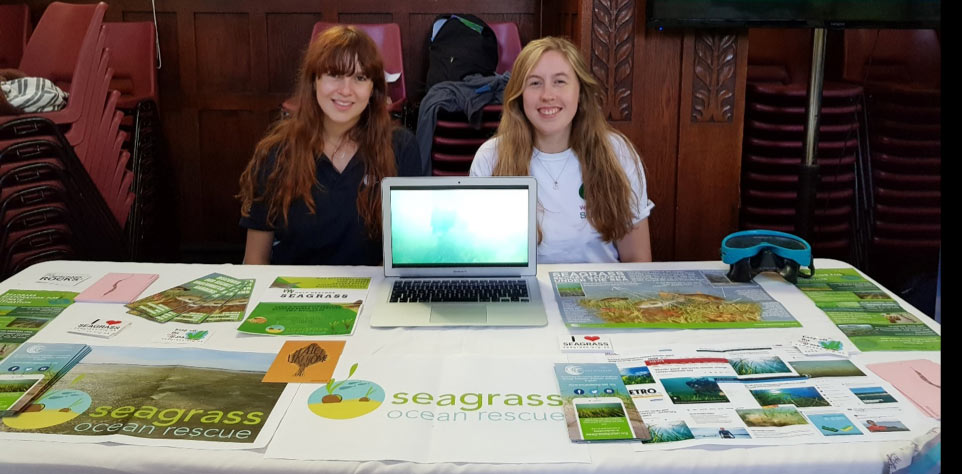
Oceans Festival was a day to celebrate work being carried out by scientists, educators, volunteers, artists and many more. There was a variety of stands all sharing the same passion for our oceans. With stalls selling sustainable and plastic free items to beautiful artwork of marine mammals as well as yummy vegan food there was something for everyone. There was a variety of stands all sharing the same passion for our oceans. Matt Brierley started the talks off on his new documentary he has been filming on the shark trade in the UK. It was shocking to find out that spiny dogfish which is critically endangered in the northern Atlantic is majority eaten in our fish and chip shops. These female sharks take 12 years to reach sexual maturity and has one of the longest gestation periods of any vertebrate, up to 2 years! Aside from this, illegal species are being brought into London fish markets, such as a juvenile scalloped hammerhead which is critically endangered and listed on CITES. It was terrifying to find out this happening in the UK. To move forward Matt wants “shark” to be labelled in fish and chips shops rather than the many other names it is given. This will make people more aware on what they are actually eating! A shocking fact I learnt at Scotland basking shark talk was that these sharks are consuming 440g of plastic every hour! There was a huge range of talks given from Lizzie Daly, Blue Ventures, Manta Trust and the Wave Project. This charity helps children who have had difficulties in their life and teaches them how to surf as a form of therapy. This massively helps build their confidence people, even changes the lives of these young people. This charity emphases how our oceans are used for a huge variety of purposes. To end the talks Andy Reid from Fins attached shared his involved with the charity and shared the legacy of Rob Stewart. This really touched me as when I was so inspired by Rob and his team growing up and how motivated he was to do everything he possibly can to save sharks and raise awareness of what is happening in the shark finning industry. His legacy carries on and with a new research vessel called Sharkwater which is traveling the globe to collect valuable marine data. On the stand it was great to hear such positive feedback from people about the project and to educate people about the importance of these incredible underwater plants. As well as seeing people wanting to get involved with the work being carried out by Project Seagrass. Overall there was a great sense of ocean optimism that spread across the festival, with people who are making a difference and to save our blue planet. Hopefully there will be more brilliant events like these. Thank you Oceans Festival 2019 for having us, and to everyone who volunteered. It was very fulfilling and enjoyable day! Thank you for reading. Issy Inman

